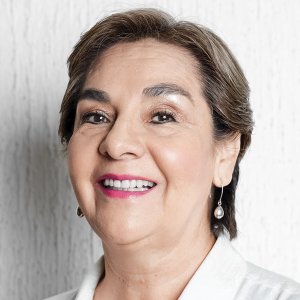Healthy Work Life in 2023: Beat Burnout!

STORY INLINE POST
WHO includes burnout in ICD-11, under the coding QD-85, within the section related to problems associated with employment or unemployment. Burnout is not a medical disease, but a syndrome resulting from chronic workplace stress that has not been successfully managed, according to ICD-11, which characterizes burnout as: “feelings of energy depletion or exhaustion; increased mental distance from one’s job, or feelings of negativism or cynicism related to one's job; and a sense of ineffectiveness and lack of accomplishment.” This syndrome is limited to work environments and should not be applied to other areas of a person’s life.
Mexico has been among the countries with the most fatigue due to work stress since before COVID-19, as at least 75% of workers suffered from this condition, according to the Mexican Institute of Social Security (IMSS). It exceeded the levels of China (73%) or the US (59%).
Work is a central part of our lives. It is something we do almost every day, for much of the day, for decades on end. In many countries today, people work much less than in the past 150 years. Working less means being able to spend time becoming more educated, or simply enjoying leisure time. This is substantial progress, but there are still huge inequalities across and within countries, and progress still to make. According to Our World In Data, the answer is clear: workers in poorer countries actually tend to work more, and sometimes much more. For example, in Mexico, with a population of 125 million and a GDP per capita of US$18,740, annual working hours per worker are 2,137, compared to US, with a population of 334 million and a GDP per capita of US$62,590, where annual working hours per worker are 1,765, 17% lower. Germany, with a population of 83 million and a GDP per capita of US$51,191, annual working hours per worker are 1,386, 35% lower than in Mexico. In 1950, Europe had the same working hours as Mexico today.
Mexico is one of the 20 richest countries in the world, but also has one of the most unequal economies. The World Inequality Report 2022 shows that this continues to be one of the main scourges in the Latin American power, where only 10% of the population hoards 79% of the wealth, while 50% of Mexicans continue in their daily fight against poverty.
I am sure that the high level of burnout in Mexico is directly related to long working hours and high inequality, among others. Companies should take responsibility and show leadership to measure and act against burnout.
Digging deeper, what is burnout and what are the systematic approaches to mitigate or reduce burnout?
It is important to differentiate stress from burnout. Although the symptoms may be similar, they are very different. We could say that Burnout Syndrome would be the extreme response to chronic stress that originated in the work context. So, stress and burnout are related. Burnout is a distinct entity, since it is associated with and specific to employment status; in contrast, depression is a more general psychiatric disorder and is not context-dependent (Maslach & Leiter, 2016).
Poorly managed stress can lead a person to present anxiety and depression. If this continues and is magnified, as well as if it is constant, a picture of emotional exhaustion-exhaustion may occur; that is, a picture of burnout. Burnout is very well understood in the case of doctors during the pandemic. The causes related to burnout are: 1) a state of emotional overload, 2) long work hours, 3) the performance of excessive physical work, and 4) a high level of demand. A high number of doctors suffered burnout during and since the pandemic, and unfortunately, we heard about lots of dramatic consequences because of that condition.
CEOs of different companies should be aware of this problem and know that burnout has substantial economic costs in respect to productivity, malpractice risk and turnover. Different occupations have different risks. Some occupations are more vulnerable than others to the effects of burnout. Christina Maslach, Ph.D., a professor emerita of psychology at the University of California, Berkeley, and a core researcher at the university’s Healthy Workplaces Center, said teachers and healthcare workers are uniquely prone to high rates of burnout, as was the case even before the pandemic.
There are practical approaches to improve the situation. Companies should clearly identify their business objectives, and understand how the well-being of employees is directly affecting the performance toward those objectives.
Professional well-being is driven by the work environment and organizational culture much more so than by individual factors, such as grit and resilience. Meaningful change in the work environment is a result of executive-level leadership, strategy, infrastructure, resources, and a system-based approach to drive progress.
APA’s 2022 Work and Well-Being Survey (American Psychological Association) confirmed that employee expectations related to mental health support are shifting, with 71% of workers reporting that they believe their employers are more concerned about employees’ mental health than in the past. More than 80% agreed that how employers support mental health will be an important consideration for them when they look for future work.
In Mexico IMSS implemented NOM-035-STPS-2018, which establishes very clear rules for companies to set up programs for identification, analysis and prevention of psychosocial risk factors as well as to promote a favorable organizational environment in the workplace. The basis for these programs to be effective is to follow a three-step course: 1) recognize that the problem has occurred, 2) prevent further harm (primary aid), and 3) promote recovery (secondary aid).
While many well-being questionnaires ask about sleep, anxiety, and depression, the NIOSH Worker Well-Being Questionnaire (WellBQ) combines this with questions about the workplace climate, supervision experience, benefits policies, and other aspects related to the work context. NOM-035 is forcing employers to implement these types of questionnaires. There are specific work-related-factors that are related to well-being, such as whether employees feel they can rely on supervisors for support, find their work meaningful, and want to go to work. Hammer’s research has shown that well-being improves when supervisors value aspects of life outside of work, such as employees’ family and sleep needs. Employees have more power due to the relative shortage of workers and the robust job market. The organizations that are the most nimble and creative in managing changes will lead the way in attracting talent.
Psychologists are seeing the benefits of telehealth and hoping payers continue to support it. Unfortunately, very few insurers in Mexico include mental health in their plans and there is very limited support from the government for mental health. MeetingDoctors, a leading telemedicine company in Spain and Latin America, is leveraging technology and our proprietary telemedicine technology to help companies implement NOM-035. We are working with our clients to implement digital solutions to get systematic information from all employees, anonymously and with strict respect to confidentiality and privacy. Employees feel confident in MeetingDoctors’ professionals as they work independently of their employers, and they get immediate medical and mental support. MeetingDoctors employs a big group of psychologists specialized in adult workers who are available on demand with one click to support all those employees who need support. MeetingDoctors offers a wide range of specialties, from medical professionals like general practitioners, pediatricians, gynecologists, dermatologists, cardiologists, bariatricians and endocrinologists as well as well-being expert,s such as psychologists, nutritionists, personal trainers, allergists and sexologists. The demand for psychologists is growing significantly in Mexico and the impact of MeetingDoctors’ programs for improving employees mental health is significant.
We conclude that organizations should implement systematic programs for measuring burnout and help employees to prevent further harm and promote improvement and recovery, helping organizations to achieve their strategic objectives, to comply with regulation and to win in the current global war for talent.
Sources
https://icd.who.int/browse11/l-m/en
























